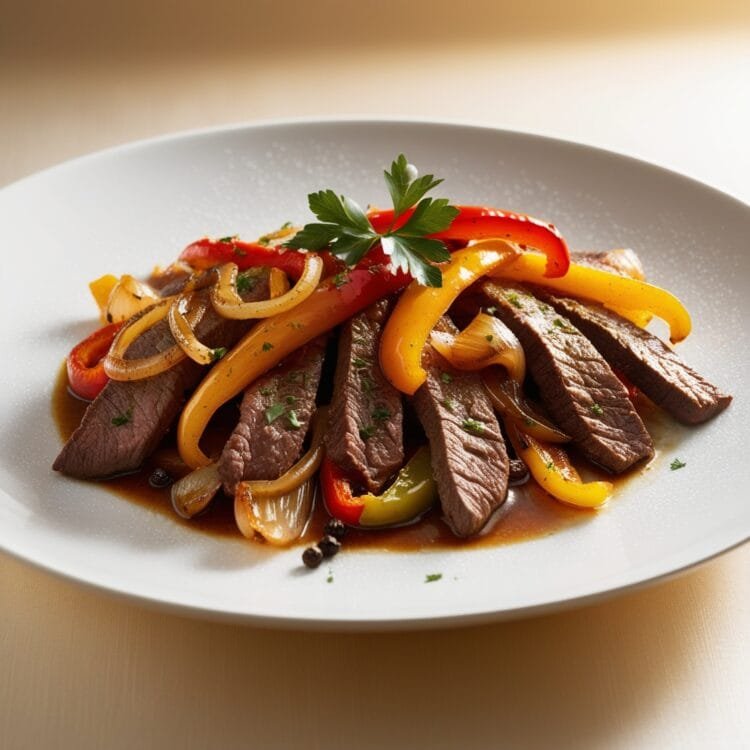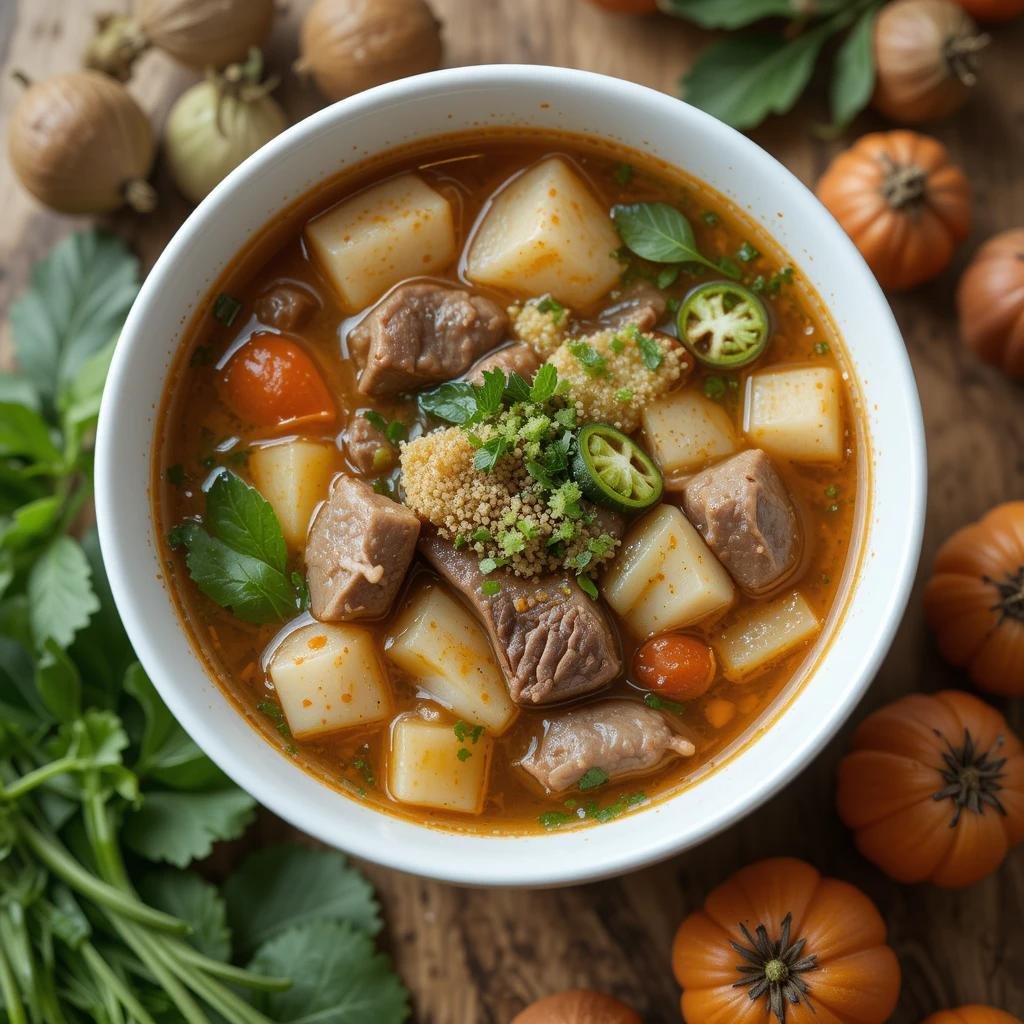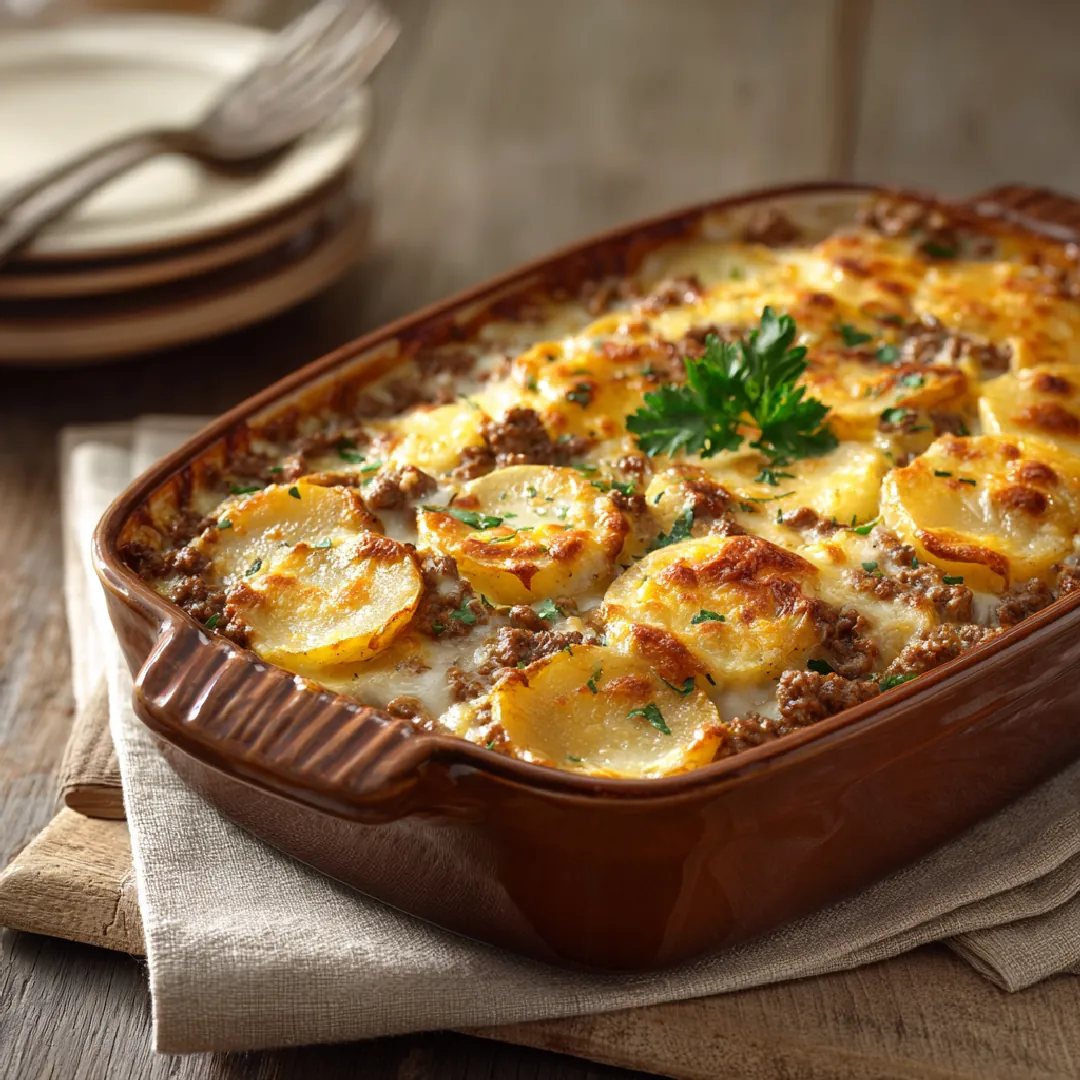Table of Contents
Introduction to Kibbeh and Falafel
When you think of Middle Eastern cuisine, one question often comes to mind: What is the difference between kibbeh and falafel? These two iconic dishes, beloved worldwide, are vastly different despite their shared regional origins. While both are flavorful, rich in history, and often found in street food markets, their ingredients, preparation methods, and even cultural significance set them apart.
This guide dives into the world of kibbeh and falafel, unraveling their unique histories, ingredients, and preparation methods. By the time you’re done reading, you’ll not only know the difference but might also feel inspired to try your hand at making these treats at home.
Overview of Kibbeh: A Culinary Delight
Kibbeh is more than just food—it’s an art form. Originating from Levantine countries like Lebanon, Syria, and Palestine, kibbeh is known for its intricate preparation and heavenly taste. It’s traditionally made with bulgur wheat, minced meat (usually lamb or beef), and a blend of aromatic spices. The most iconic form is shaped like a small torpedo, deep-fried to golden perfection, but kibbeh comes in several forms—baked, raw, or even served in stews.
Imagine biting into kibbeh: a crisp shell giving way to a juicy, savory filling. It’s like unwrapping a tiny present packed with flavor.
What Makes Falafel a Global Favorite?
Falafel, on the other hand, is a vegetarian superstar. Originating from Egypt and later spreading to Israel and other parts of the Middle East, falafel is made from ground chickpeas or fava beans. These legumes are mixed with herbs, garlic, and spices, then shaped into balls or patties before being fried to crispy perfection.
It’s no surprise that falafel has become a global phenomenon. Whether tucked into pita bread, topped with tahini sauce, or served as a snack, falafel is adored for its versatility and satisfying crunch.
As they say, falafel isn’t just food; it’s comfort wrapped in a pita!
“Food is not just nourishment; it’s an experience, a memory in the making.” 🌍
Origins and Cultural Significance of Kibbeh and Falafel
To fully appreciate kibbeh and falafel, let’s explore where they come from. Knowing their roots not only deepens your appreciation but also gives you a sense of their cultural significance.
The Historical Roots of Kibbeh
Kibbeh’s origins are deeply tied to Levantine traditions. Historical texts suggest it has been around for centuries, often gracing the tables of feasts and celebrations. Its preparation is a communal activity, especially in rural areas, where families gather to mix, knead, and shape kibbeh.
The dish’s adaptability is remarkable. Each region in the Middle East has its spin on kibbeh, from raw kibbeh (kibbeh nayyeh) in Lebanon to stuffed and baked versions in Syria. It’s a dish that has evolved but still holds onto its roots, a testament to its cultural importance.
Tracing the Journey of Falafel Across Cultures
Falafel’s story begins in ancient Egypt, where fava beans were abundant and formed the base of early versions. As it traveled to other regions, chickpeas were introduced, and falafel took on the form we know today.
What makes falafel special is how it transcends cultural boundaries. In Israel, it’s considered a national dish. In Arab countries, it’s a symbol of street food culture. And across the world, it’s embraced as a delicious vegetarian option. Falafel, in a way, is a unifying force—a humble food that tells a story of migration and adaptation.
“Every bite of kibbeh and falafel is a bite of history.” 📜
Ingredients of Kibbeh vs. Falafel
You might think kibbeh and falafel share similar ingredients, but that’s not the case. Their core components are wildly different, setting the stage for their distinctive flavors.
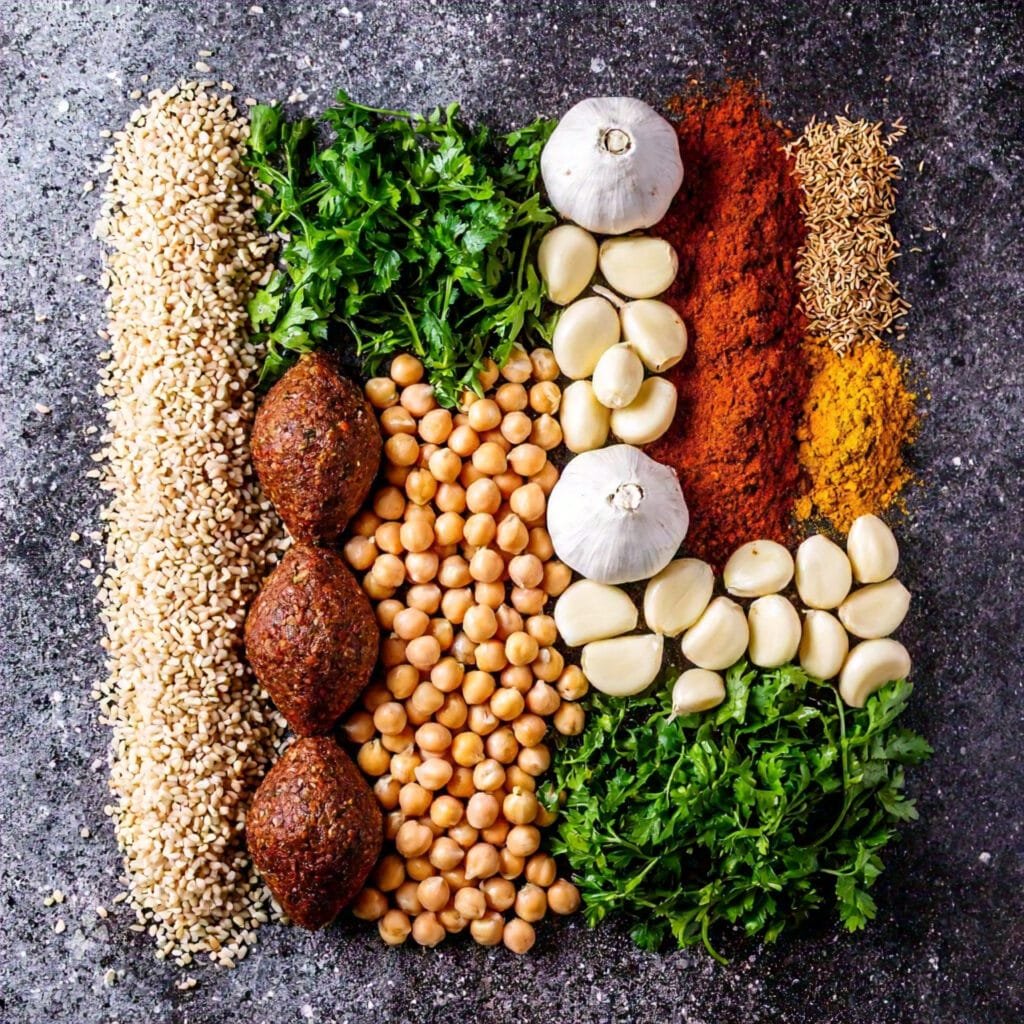
Key Ingredients in Traditional Kibbeh Recipes
At its heart, kibbeh relies on bulgur wheat, which gives it that chewy, nutty texture. This is combined with finely minced meat, often lamb, and a carefully curated mix of spices like cinnamon, allspice, and cumin. Onions and pine nuts are also common additions, especially in the stuffing.
What sets kibbeh apart is its spice profile. The warm, earthy flavors are designed to complement the richness of the meat, creating a balance that’s simply divine.
What’s Inside a Perfect Falafel?
Falafel is all about chickpeas or fava beans. These legumes are soaked, ground, and mixed with parsley, cilantro, garlic, and spices like coriander and cumin. Baking soda is sometimes added to give falafel its signature fluffy interior.
Unlike kibbeh, falafel is entirely plant-based, making it a favorite among vegans and vegetarians. The bright, herby flavors of falafel contrast beautifully with its crunchy exterior.
Preparation and Cooking Techniques
The preparation methods of kibbeh and falafel couldn’t be more different. While kibbeh requires a bit of finesse, falafel is more straightforward but no less rewarding.
How Kibbeh Is Traditionally Prepared
Making kibbeh is a labor of love. The bulgur wheat is soaked until soft, then combined with ground meat and spices to form a dough. For stuffed kibbeh, this dough is shaped into small torpedoes and filled with a mixture of sautéed meat, onions, and pine nuts.
Once shaped, kibbeh can be deep-fried, baked, or cooked in a tomato-based stew. Each method brings out a different facet of its flavor.
Cooking Methods for Authentic Falafel
Falafel is much simpler to prepare. The soaked legumes are blended with herbs and spices, shaped into balls or patties, and then deep-fried until golden brown.
For those looking for a healthier option, falafel can also be baked or air-fried. The result may not be as crispy, but the flavors remain just as vibrant.
Nutritional Comparison: Kibbeh vs. Falafel
When it comes to nutrition, kibbeh and falafel have their own unique benefits and drawbacks. Understanding their nutritional profiles can help you decide which one suits your diet and lifestyle better.
Nutritional Benefits of Kibbeh
Kibbeh, with its combination of bulgur wheat and meat, is a good source of protein, fiber, and essential minerals like iron and zinc. The bulgur wheat provides complex carbohydrates that release energy slowly, keeping you full for longer periods.
However, the way kibbeh is cooked can affect its nutritional value. Deep-fried kibbeh, while delicious, is higher in fat and calories compared to baked or boiled versions. Opting for these lighter preparations makes kibbeh a healthier choice without sacrificing its rich flavors.
Kibbeh also shines in its versatility. You can add extra vegetables to the filling or use lean meats to reduce fat content. Who said comfort food can’t be wholesome?
Is Falafel a Healthier Choice?
Falafel is often considered a healthier option, especially for vegetarians and vegans. Packed with plant-based protein and fiber, falafel supports digestive health and provides long-lasting energy. The herbs and spices used in falafel not only add flavor but also bring antioxidants to the table.
However, like kibbeh, falafel’s nutritional value depends on how it’s prepared. Traditional deep-fried falafel can be high in fat. To keep it light, many people choose baked or air-fried versions, which are just as tasty but much lower in calories.
It’s worth noting that falafel is naturally gluten-free when made with chickpeas or fava beans, making it a great option for those with gluten sensitivities.
“A well-made falafel is more than food; it’s a guilt-free indulgence.” 🥙
Taste and Texture: What Sets Them Apart?
Now, let’s talk about the most important aspect—taste. After all, what’s a dish without flavor? Kibbeh and falafel each bring something unique to the table.
The Unique Flavors of Kibbeh
Kibbeh’s taste is deeply savory and aromatic, with warm spices like cinnamon and allspice adding complexity. The meat filling is rich and juicy, while the bulgur wheat offers a nutty, chewy contrast.
Texture plays a big role in kibbeh’s appeal. The outer shell is typically crispy (if fried), while the inside remains tender and flavorful. This contrast makes each bite an adventure for your taste buds.
Kibbeh pairs beautifully with tangy yogurt sauces or fresh salads, which cut through the richness and add a refreshing balance.
Why People Love Falafel’s Crispy Goodness
Falafel, on the other hand, is all about that crunch! Its golden-brown exterior gives way to a soft, fluffy interior bursting with bright, herby flavors. The combination of chickpeas or fava beans with garlic and parsley creates a taste that’s earthy yet fresh.
Falafel is often served with creamy tahini sauce, pickled vegetables, or even hummus. These accompaniments enhance its flavor and add layers of texture, making every bite more satisfying.
When you’re in the mood for something crispy and light, falafel hits the spot like nothing else.
Serving Styles and Accompaniments
How kibbeh and falafel are served is just as important as how they’re made. Both dishes are incredibly versatile, lending themselves to a variety of serving styles.
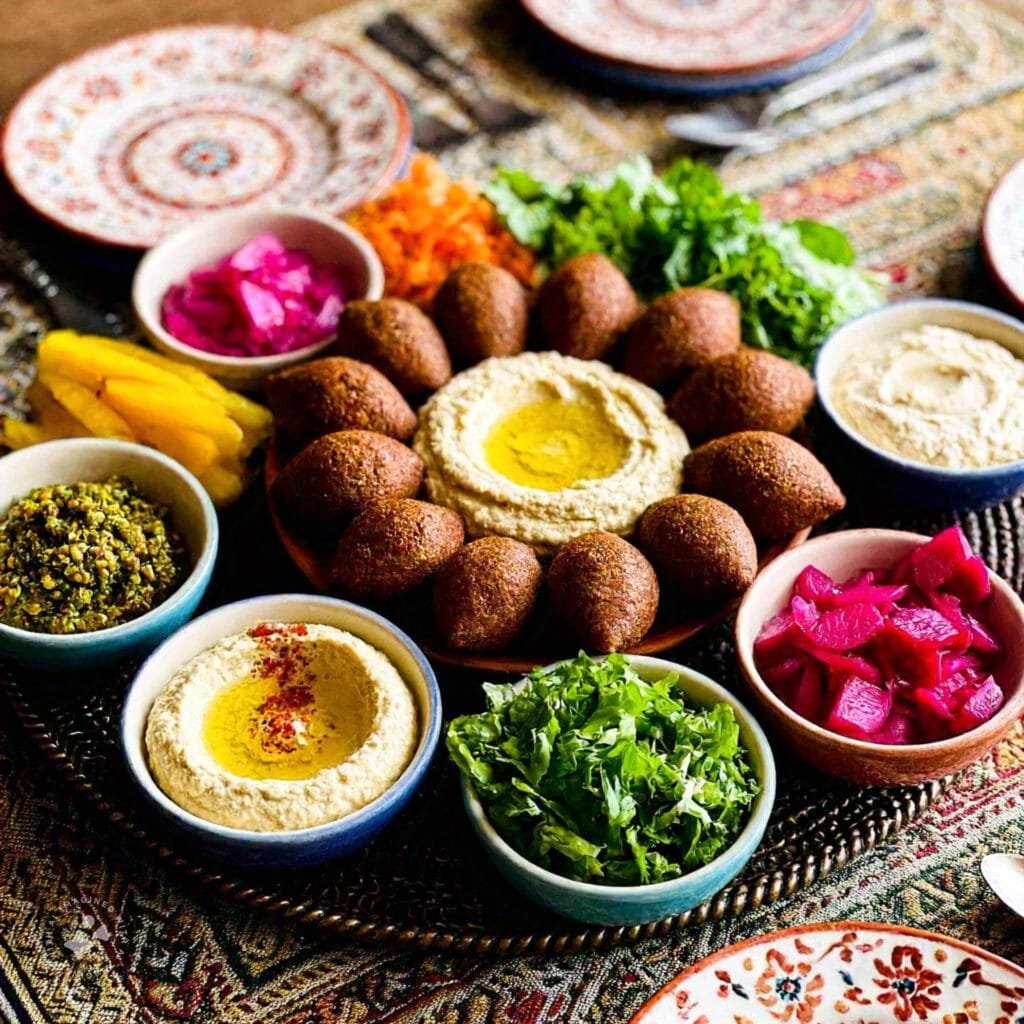
Traditional Ways to Serve Kibbeh
Kibbeh is often the centerpiece of a meal. In its fried form, it’s served as an appetizer or snack, accompanied by fresh mint, sliced onions, and a dollop of creamy yogurt or tahini.
Baked kibbeh is a heartier option, often presented as a casserole layered with meat and bulgur. It’s a popular choice for family gatherings and special occasions.
Kibbeh nayyeh, the raw version, is a delicacy in Lebanon. It’s served with olive oil, bread, and sometimes fresh vegetables, allowing the natural flavors of the meat and spices to shine.
Popular Dishes That Pair with Falafel
Falafel is a star in its own right but truly shines when paired with other dishes. The most iconic way to enjoy falafel is in a pita sandwich, stuffed with fresh vegetables, pickles, and a generous drizzle of tahini sauce.
Falafel platters are another popular choice, featuring falafel balls alongside hummus, baba ghanoush, tabbouleh, and pita bread. This combination offers a medley of flavors and textures that complement each other beautifully.
For a lighter option, you can toss falafel into a salad for a protein boost. Its crispy exterior adds a delightful crunch, making even the simplest salad feel gourmet.
Common Issues in Preparing Kibbeh and Falafel
Even seasoned cooks can encounter challenges when making kibbeh or falafel. But don’t worry—every problem has a solution!
Troubleshooting Kibbeh: Tips and Tricks
One common issue with kibbeh is the dough being too dry or crumbly. This can happen if the bulgur wheat isn’t soaked long enough. To fix this, make sure the bulgur is fully hydrated before mixing it with the meat.
Another challenge is preventing the kibbeh shells from cracking during frying. A trick here is to keep your hands slightly wet while shaping the kibbeh, ensuring a smooth, crack-free surface.
If your filling is too greasy, try using leaner cuts of meat and draining any excess fat during cooking.
Common Mistakes When Making Falafel and How to Avoid Them
For falafel, the most frequent issue is the mixture falling apart while frying. This usually happens if the chickpeas are too wet. To avoid this, make sure to drain and dry them thoroughly after soaking.
Another mistake is using canned chickpeas, which don’t provide the right texture. Always start with dried chickpeas for the best results.
Lastly, if your falafel turns out dense instead of fluffy, you might be over-mixing the dough. Be gentle—less is more when it comes to achieving that perfect, airy texture.
Regional Variations of Kibbeh and Falafel
Both kibbeh and falafel are staples of Middle Eastern cuisine, but their regional variations make them even more fascinating. Each twist reflects local ingredients, culinary traditions, and cultural nuances, offering endless ways to enjoy these dishes.
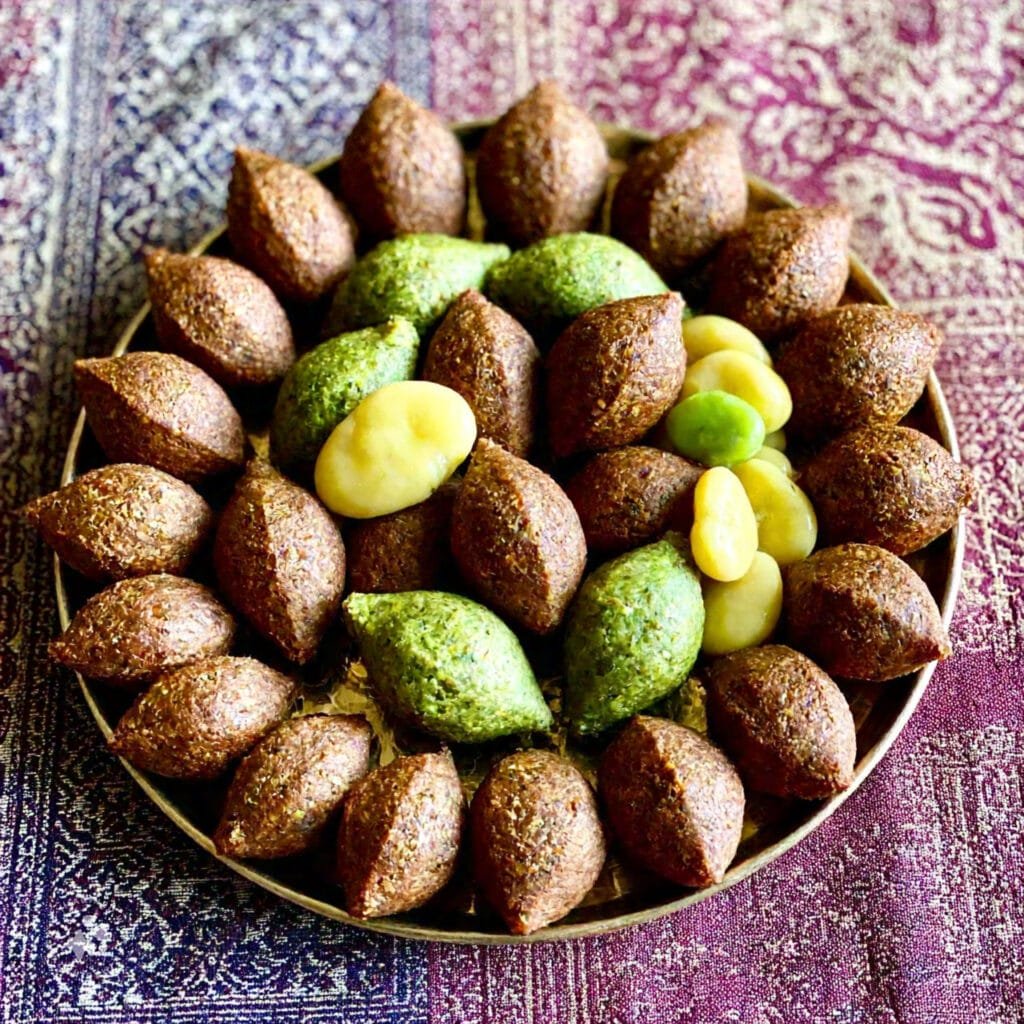
How Kibbeh Differs Across the Middle East
Kibbeh is a versatile dish, and its preparation varies significantly depending on where you go. In Lebanon, kibbeh nayyeh, the raw version, is cherished as a delicacy. It’s served fresh and seasoned to perfection, often enjoyed with olive oil and flatbread.
In Syria, you’ll find kibbeh bil sanieh, a baked version layered like a casserole. This dish is hearty and often served during family gatherings or special occasions.
Iraq offers a unique take with kibbeh halab, which is fried and stuffed with rice and meat, creating a dish that’s both filling and flavorful. Meanwhile, in Palestine, kibbeh is sometimes prepared with a touch of sumac, adding a tangy twist.
Each variation brings something unique to the table, making kibbeh a dish that evolves yet stays true to its roots.
Regional Twists on the Classic Falafel Recipe
Falafel, too, boasts numerous regional adaptations. In Egypt, the birthplace of falafel, it’s traditionally made with fava beans instead of chickpeas. This version, known as ta’amiya, has a softer texture and a more earthy flavor.
In Israel and Lebanon, falafel is primarily chickpea-based, often packed with vibrant herbs like parsley and cilantro. It’s also a popular street food, served piping hot in pita bread with a medley of fresh toppings.
In Yemen, falafel gets an extra kick of spice, reflecting the bold flavors of the region. Meanwhile, Syrian falafel might include a pinch of ground coriander for a slightly nutty undertone.
No matter where you try falafel, its essence remains the same: crispy on the outside, fluffy on the inside, and bursting with flavor.
Popularity and Modern Interpretations
Kibbeh and falafel may have ancient origins, but they’ve seamlessly adapted to modern culinary trends. Chefs worldwide are putting innovative spins on these classics, bringing them into the contemporary spotlight.
Kibbeh in Contemporary Cuisine
Modern kibbeh recipes are breaking boundaries. In some fusion cuisines, you’ll find kibbeh stuffed with unconventional ingredients like cheese or mushrooms. Vegan kibbeh, made with lentils or chickpeas instead of meat, is also gaining popularity as plant-based diets become more widespread.
Kibbeh sliders—tiny kibbeh patties served on mini buns—are a hit at parties, offering a bite-sized version of this Middle Eastern favorite. There’s even kibbeh sushi, where the bulgur and meat mixture is shaped like sushi rolls and served with tahini dipping sauce.
These creative takes prove that kibbeh is as versatile as it is delicious.
Falafel’s Role in Vegan and Vegetarian Diets
Falafel has long been a go-to for vegetarians, but its popularity has skyrocketed in the vegan community. With its high protein content and plant-based ingredients, falafel fits perfectly into a variety of diets.
Modern versions of falafel include baked or air-fried options for a healthier twist. You’ll also find beetroot falafel, spinach falafel, and even quinoa falafel, catering to a range of tastes and dietary needs.
Restaurants are also experimenting with falafel tacos, falafel burgers, and even falafel waffles—yes, waffles! These innovations keep falafel exciting and show how adaptable this dish truly is.
“Modern twists on traditional dishes keep them alive and relevant, proving that good food knows no limits.” 🌟
Conclusion: Kibbeh and Falafel in Harmony
After exploring the intricacies of kibbeh and falafel, it’s clear that these dishes, while different, share a common thread: they’re deeply rooted in culture, history, and community.
Celebrating the Unique Identity of Each Dish
Kibbeh is all about balance—a rich, savory filling enveloped in a chewy or crispy shell. It’s a dish that requires skill and patience, reflecting the love and effort that goes into Middle Eastern cooking.
Falafel, on the other hand, is a celebration of simplicity. It transforms humble ingredients like chickpeas and herbs into something extraordinary. Its accessibility and adaptability make it a favorite worldwide.
Why Both Dishes Deserve a Spot on Your Plate
You don’t have to choose between kibbeh and falafel. Each brings something special to the table, offering unique flavors, textures, and experiences. Whether you’re hosting a dinner party or grabbing a quick bite, there’s always room for both.
So why not embrace the best of both worlds? After all, food isn’t just about sustenance—it’s about connection, tradition, and discovery.
FAQs
What is the main ingredient in falafel?
Falafel is typically made from chickpeas or fava beans, blended with herbs and spices to create its signature flavor.
Can kibbeh be made vegetarian?
Yes! Many modern recipes replace the meat in kibbeh with lentils, mushrooms, or chickpeas for a vegetarian version.
Is falafel gluten-free?
Falafel is naturally gluten-free when made with chickpeas or fava beans. However, always check if any flour or breadcrumbs are added to the recipe.
What is the best way to cook kibbeh?
The best cooking method depends on the type of kibbeh. Fried kibbeh is crispy and indulgent, while baked kibbeh offers a healthier alternative with the same great taste.
Why does falafel sometimes fall apart during frying?
Falafel can fall apart if the chickpeas are too wet or the mixture isn’t well-blended. Properly draining the chickpeas and adding a binding agent like flour can help.
What dishes pair well with kibbeh and falafel?
Kibbeh pairs well with yogurt-based sauces, fresh salads, and pickles. Falafel is delicious with hummus, tahini, and pita bread.
You might also like Lebanese Lunch Recipes – A Culinary Journey


